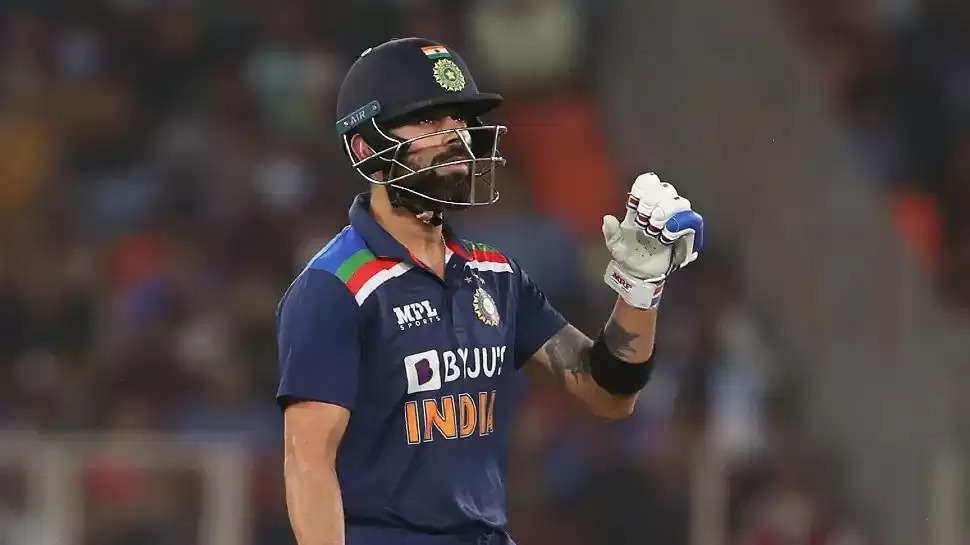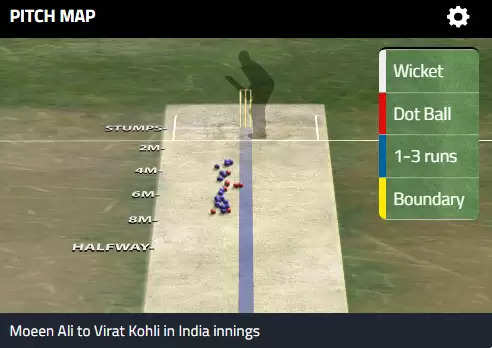Is India’s ODI batting approach really a big issue?

The defeat in the second ODI of the ongoing series against England has brought India’s batting approach in the spotlight. The Indian batting unit has been criticized for their conventional innings-building approach.
Former England batsman Michael Vaughan even tweeted that India’s approach might cost India a World Cup at home.
Today should be a lesson to India … Playing it safe for 40 overs with Bat might cost them in a World Cup at home in 2 yrs … they have enough power & depth to get scores of 375 + on flat wickets … England leading the way with this approach … #INDvENG
— Michael Vaughan (@MichaelVaughan) March 26, 2021
A lot of fans and pundits are of the opinion that India should take a leaf out of England’s batting style and approach. There is no doubt regarding England’s white-ball success in recent years. But are India really that behind?
Do they need wholesale changes in their batting approach? Is India’s batting really that big a concern, or is it just an overreaction after a defeat?

Before we talk about India, let’s talk about England.
They are a mad batting unit. However, during an ODI series against Australia in September last year, the English skipper Eoin Morgan spoke about slow tracks in England – for the preparation of World Cup 2023. It was probably an indication that they are ready to steady their approach, depending upon the tracks, of course.
Before the 2019 World Cup, England played plenty of cricket on flat decks at their home. They played to their strengths, and now they are ready to adapt. Slow tracks would mean lower scores than earlier. It is an excellent method for preparation.
But when England are preparing for slower decks, do India need to follow the ‘England method’?
The story of the last game:
There is no doubt that India could have been a bit more aggressive in the last game. The duo of Virat Kohli and KL Rahul, who helped India in recovering, added 121 runs off 141 balls for the third wicket. The partnership run-rate was 5.15 RPO.
Even though Rahul came to the crease in the 9th over, let’s start the analysis from the middle overs. At the end of the powerplay (India: 41/2), Kohli was on 11 off 16 while Rahul had faced just two balls without scoring a run.
- From the 11th to 18th over, Tom Curran and Ben Stokes bowled four and three overs respectively while Moeen, just one. While Kohli accelerated to 28 (34), Rahul was stuck at 17 (32). The Karnataka batsman was off to a really slow start. India: 77/2; 4.28 RPO.
- From the 19th to 32nd over (Kohli’s dismissal), Moeen and Rashid operated. India: 158/3; 4.94 RPO. Kohli and Rahul preserved the wickets and milked the spinners well. However, the acceleration could have been better.
Kohli could have done better against Moeen Ali. Even against full-pitched deliveries and short-balls, the Indian skipper didn’t score boundaries. He was happy to push the ball to rotate the strike, he played the ball in the ‘V’ to score singles and doubles.

India vs England 2nd ODI, 2021: Moeen Ali vs Virat Kohli | Credit: BCCI
Rahul, who was off to a slow start, didn’t accelerate in the middle. After 50 balls, his score read 35, after 60 balls, 45. He accelerated later onwards but that wasn’t enough. And, before he could really take off after registering his ton, he got out!
Even though the Indian batsmen were decent against Adil Rashid, they were simply poor against Moeen Ali. The off-spinner conceded just one boundary in his spell, that too as a result of a misfield by Ben Stokes.

India vs England 2nd ODI, 2021: Moeen Ali vs All Indian batsmen | Credit: BCCI
To let him go for just 47 runs was quite bad from India. They should’ve attempted boundaries at least against full and short deliveries. That would have put him under pressure and the story could have been different.
Also Read: Prasidh Krishna can be a long-term middle-overs enforcer for India
England were without Jofra Archer and Mark Wood, two of their leading pacers. And India wouldn’t have scored much had it not been for mad shows by Rishabh Pant and Hardik Pandya? It’s just one game but India should ensure that it doesn’t become a trend.
Minor fixes will do the job!
India should be really happy if Rishabh Pant finds his feet in ODI cricket. India have a problem of plenty but they should find a way to fit him in. He brings that ‘X-factor’ as the Indian skipper would say.
Pant. Quality.
Surely has to play every game for India going forward. No debate.
Match-winner!
— Ian Bell (@Ian_Bell) March 26, 2021
Pant is unarguably India’s best option to bash spinners in the middle overs. He has got power, he has got a wide array of shots, and very importantly he has that intent. How many players would have gone for shots as Pant did in the last game – when a player’s place in the side isn’t secure? Pant did! He is selfless, he is a mad-lad, he is skilled.
He will get better as he plays more.
ALSO READ: Prasidh Krishna: first impressions
Another talking point is the scoring rate of openers in the powerplay. You’d expect the openers to score quickly in overs 6-10 as they are used to the deck a bit. Thus, the runs in the first-five overs might be crucial at times.
The general set-template so far is Dhawan as an aggressor, and Rohit plays the second-fiddle in the powerplay. They might ask them to be a bit more aggressive in the first-five overs but it’s not feasible to ask them to play as Roy & Bairstow do.
Also, Dhawan’s every failure is slowly becoming a topic of discussion. With age not on his side, it’s expected. But, the team management needs to take a clear stand on this – which they’ve so far.
The point is if India want to move on from Dhawan, they should. You expect players to decline with age and want to groom the young players for the future. Prithvi Shaw is a good alternative. Shaw can be a good powerplay aggressor. His intent, his horizontal-bat shots might be very useful.
But if India don’t move on from Dhawan, he should be given security. His every failure shouldn’t be a hot topic of discussion.
Let’s talk about bowling a bit?
Even though the batting talks took the centre-stage, India’s ODI bowling has been mediocre for quite some time now. In their last five bilateral ODI series, the bowling unit has produced substandard performances.
Indian bowlers as well as the top-7 Indian batsmen have been averaging over 44 in each of their last five bilateral series. Obviously, a good thing for batsmen but not for bowlers!
The bowlers have also leaked runs at a high economy. They have failed to pick wickets and haven’t been miser either. Good batting surfaces is a reason but the Indian bowlers need to do better.
One of the main reasons behind India’s poor bowling performances in recent times is the lack of powerplay wickets. Among teams who’ve played at least 20 ODIs since 2019, India are the worst in each metric – wickets-per-match, bowling average and strike rate. Mohammed Shami, Jasprit Bumrah and Bhuvneshwar Kumar have failed to do their job!
The opening duo of Jason Roy and Jonny Bairstow has really enjoyed batting against India. Since 2018, against oppositions whom England have faced more than once, their opening partnership is the best against India. The Indian bowlers have failed to contain the J-duo. On average, they add 98.33 runs per partnership and score at 7.53 RPO. In six innings, the English openers have shared three century stands and two half-century partnerships.
India need to do something about it. Probably, Mohammed Siraj can be given a chance in the third ODI. Siraj might be effective with the new ball. In his short Test career and in the IPL 2020, he displayed enough sharpness in his bowling to be considered a decent powerplay bowler.
ALSO READ: Fantasy tips for the third ODI
Another issue with India’s bowling is the downfall of the Indian spinners – Yuzvendra Chahal and Kuldeep Yadav. Their downfall has been quite agonising. The control and the energy in their bowling is missing. Good batting surfaces with almost no assistance haven’t helped either. But the issue should be addressed as soon as possible. In the long run, India might consider trying out new options.
***
All in all, the Indian batting unit needs a few fixes, which is possibly easily. However, as of now, the bowling department needs to be sorted out. England chased 337 within 44 overs. Indeed, India are missing a few of their main bowlers and Hardik isn’t bowling but they need to do better. It reflects very badly on a side that was once considered as the best bowling unit two years back or so.

